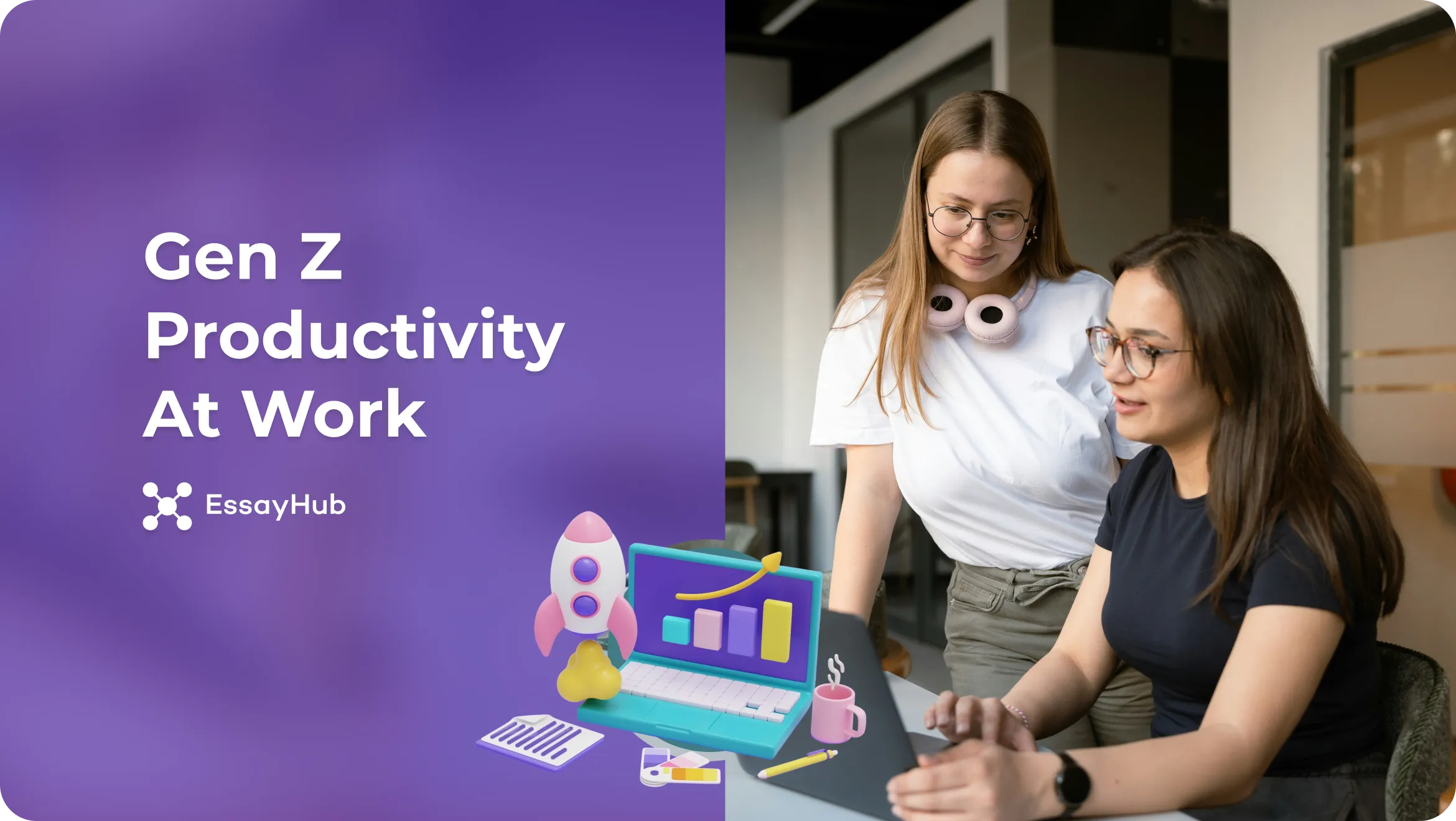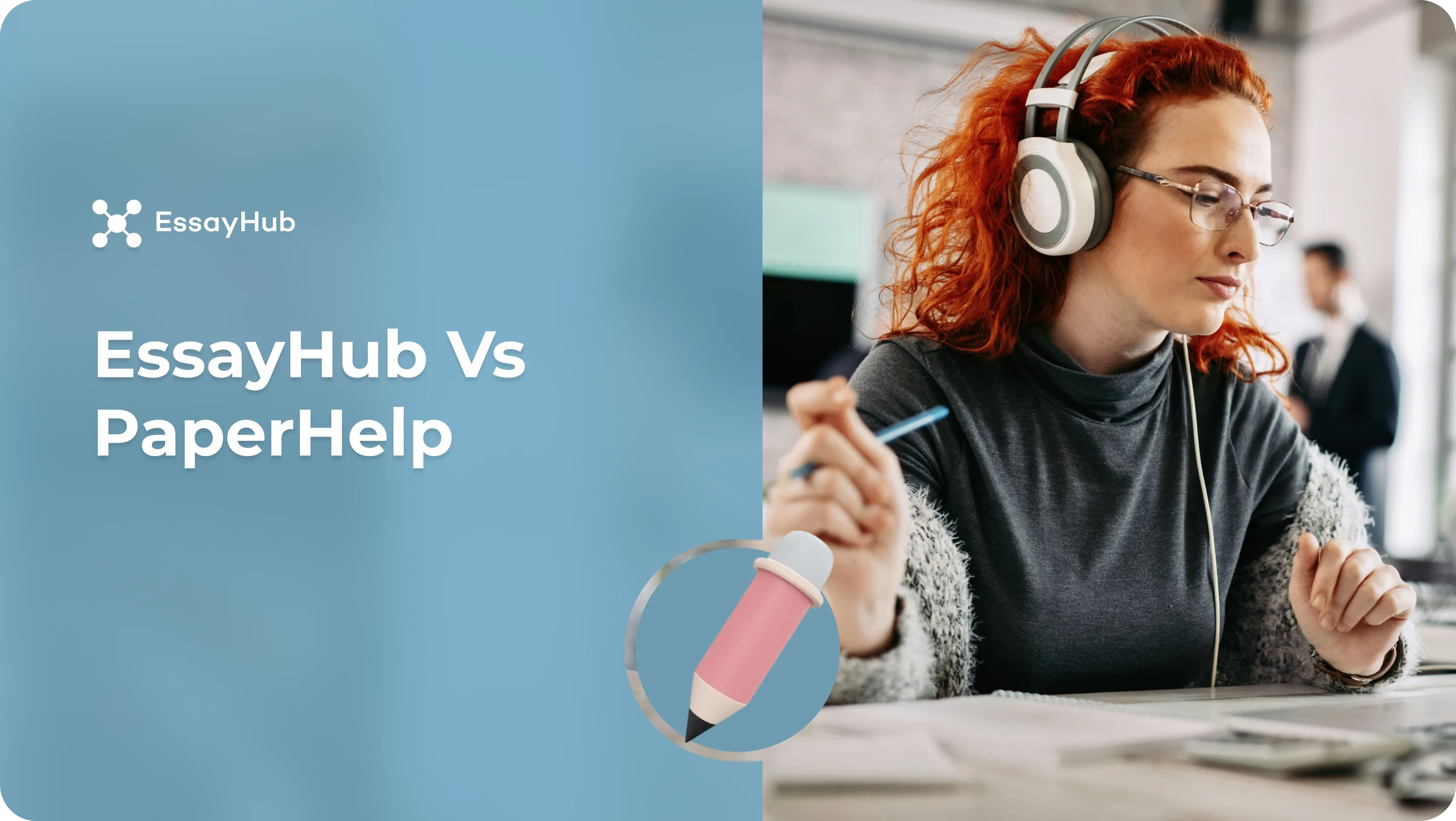Classrooms are no longer what they used to be, and honestly, it's about time! Imagine exploring the Great Wall of China or wandering around the human bloodstream, all thanks to slipping on a headset! Virtual reality education has gone beyond just a cool tech trend and has invited students into hands-on experiences. Now, students get to actually be there instead of zoning out during theoretical lectures.
This article will help you understand how VR is being used in schools, what its actual benefits are, and what the future of schools might look like if headsets end up becoming as common as textbooks.
If you don't have time to research virtual reality trends because of a mountain of schoolwork, EssayHub's essay service will give you professional academic support and help you get unstuck when you need a hand.
What is Virtual Reality?
The magic of virtual reality in education is that it allows you to step into a history book and walk around ancient cities or float around the solar system between planets, all without leaving your seat! VR pulls students into interactive learning experiences with immersive technology to make sure education doesn't stop at theories. A few important players need to be present to make all this happen:
- VR headsets – These are your ticket into the virtual world. All you have to do is put one on, and you'll be transported outside your class.
- Controllers or motion sensors – With these, you can grab objects, flip switches, and even high-five a virtual classmate. In short, controllers allow you to use your hands in virtual reality.
- Specialized software – It turns your headset into a time machine, science lab, or art gallery: whatever the lesson calls for.
So, is virtual reality really all that different from 360° videos? Yes, completely! With a 360° video, you can stand in a prehistoric settlement, but that's about all you can do. VR actually lets you interact with the objects around you.
How Does VR Learning Actually Work?
There's quite a bit of prep before students get to wander around in virtual castles or explore the cell organelles. Here's how it all comes together step-by-step:
- Content Creation - Developers, educators, and designers team up to create immersive virtual lessons.
- Picking The Gears - Schools choose headsets, apps, and software that match what students are learning (and don't blow the budget).
- Teacher Training - No one can wing VR technology with zero idea of what's happening. This is why teachers get trained on how to use VR equipment and guide students.
- Tracking - The system tracks students' movements, so when they turn their heads or reach for something, the world can instantly keep up.
- Immersive Learning Experience - Students dive in and learn by doing, not just listening.
Benefits of VR in Education
Adopting virtual reality into education aims to increase student engagement by making the learning process hands-on and even fun. With VR technology, students can step into lessons and actively participate in meaningful learning experiences.
Enhanced Learning in Science and Medicine
Science class just got a major upgrade! If the smell that comes with frog dissection keeps haunting you, virtual learning environments allow you to do a full dissection without any scalpels or the need to wash your hands ten times afterward. Even in the world of higher education, medical students can now practice surgeries and diagnosis scenarios in hyper-realistic educational settings, all without the risk.
Virtual Field Trips and Cultural Exploration
Gone are the days of begging the school and parents for permission slips and bus rentals. With VR, students can chat in French in a virtual boulangerie without boarding a plane. They can walk through ancient ruins, admire the masterpieces in the Vatican, or simply take a street tour in Tokyo.
Skill Development in Technical Fields
Engineering students no longer have to spend weeks building and rebuilding models to figure out what works and what doesn't. Now, they can design and test virtual machines and run endless simulations before anything gets built. As for architecture, virtual settings allow them to walk literally through their designs and explore every corner to make adjustments as they go along. Can you imagine how much more enjoyable (and efficient) this is compared to staring at a 2D blueprint for hours?
Immersive Language Learning
Forget mindlessly memorizing and repeating vocabulary into an app that doesn't respond. Virtual reality lets you live the language you're learning. You can practice all you want - order food in a virtual restaurant, ask for directions in a virtual city and even practice your communication skills through real-life conversations with AI characters. All this comes with a huge added benefit of exploring different cultures while you're learning languages because language isn't just words; it's the whole world that comes with them.
Improved Special Education Support
With VR integrated into education, classes can now be customized according to the individual requirements of the students with special needs. Learning becomes far less stressful for students with ADHD or those on the autistic spectrum because they can be tailored to their pace and needs. These VR programs allow students to feel safe and genuinely enjoy the immersive education they're getting.
For a deeper understanding of how educators assess and support individual learning needs, you can also check our article about what is an FBA?
How VR is Used in Modern Classrooms
VR has officially moved on from just being a flashy gadget and has earned its place as a legitimate teaching tool for providing students with meaningful learning experiences. In the next section, we'll talk about how virtual reality in education is making schools a whole lot cooler and smarter. We'll cover:
- How classrooms have turned into interactive playgrounds
- What actually happens with VR headsets in class
- How primary school kids are getting hooked on learning
- What high schoolers are doing with VR
- How students with learning differences have started thriving
Classrooms That Feel Like Adventures
Virtual reality can transform classrooms into anything the lesson calls for. It could be a rainforest, a spaceship, or even some part of the human body! Such immersive learning environments let students actually interact with the stuff they study instead of just listening and nodding while secretly thinking about when they'll be getting home. A virtual reality classroom brings education that feels more like an adventure than a chore, which means that it can engage students so they walk away actually remembering what the class covered.
When Headsets Hit the Desk
Classes get a serious glow-up the second VR headsets come out. Instead of reading about ancient Rome, they can witness gladiator fights in almost real life. Art class? They're right inside a Van Gogh painting, swirling brushstrokes and all. In science labs, they can run all the wild experiments without the risk of injuring themselves. Trained teachers guide the learning experiences so all students get the most out of this completely mess- and stress-free learning process.
Little Learners, Big Experiences
VR technology is basically magic for the little ones. Imagine how excited they are when they get the chance to walk around with dinosaurs or watch the Northern Lights from their seats! VR education turns abstract concepts into stuff elementary school students can actually see and play with, which can be a total game-changer for curious minds. Let's be honest: nothing grabs a six-year-old's attention quite like exploring space in 3D.
High Schoolers Getting Real With VR
Secondary students can use virtual reality technologies for all kinds of learning before they're ready to step into the world of higher education. Immersive learning can teach students how different chemical reactions work without any risks and even allow them to practice soft skills like public speaking or interview prep for future college applications. These interactive and flexible features get students thinking in ways that regular classrooms just can't.
Help for Students Who Learn Differently
Incorporating VR into education can make an unimaginable difference for students with different learning disabilities. Immersive virtual reality creates a calm space that's focused on how individual students learn best. So, no more usual classroom noise for those with ADHD or unnecessary pressure for students on the autistic spectrum. Just a safe and controlled environment where lessons can be repeated and everything can move at a comfortable pace.
The Future of VR and Education
What we're seeing right now with VR in education is just a warm-up. The future of VR education is looking even more promising and fun for everyone involved. While we certainly can't predict where educational technology will take us, we can still make a couple of assumptions about where immersive learning will go.
Before We Log Out of the Virtual Classroom...
We can safely say that VR is on a fast track to becoming a regular part of education. Not just a bonus or a gimmick but rather a useful tool that can revolutionize education. Let's do a quick recap of what we've already talked about before saying goodbye:
- VR turns boring lessons into hands-on experiences you can actually feel your way through.
- It's already being used in schools to teach everything, with no passport or lab goggles required.
- Younger students get to explore and stay curious. Older students build practical skills without the pressure.
- For those with learning difficulties, VR offers calm, structured spaces where they can go at their own pace.
- The future's only getting more exciting!
School can still feel overwhelming, even with all the cool tech in the world. If you have to complete assignments even though you've got zero brainpower left, EssayHub is the place to look! Our professional academic writers can start writing essays for money the second you let them know what you need so you can get through your workload without burning out.
FAQs
What Is VR in Special Education?
VR in special education gives the students in need a personalized learning universe. It can create a focused environment where everything moves at a comfortable pace so they don't get overwhelmed by the workload.
How Is VR Useful in Higher Education?
VR in higher education helps students get hands-on with more complex stuff. Now, they can practice surgical skills, build engineering designs, and even polish their public speaking skills.
How Is VR Used in Education?
VR allows students to walk through the history lessons, look around the parts of a cell, and actually experience whatever they're learning like it's a sci-fi adventure. It's used to make lessons immersive and interactive.
- Chandra, B. (2024, August 12). Council Post: Revolutionizing Education: The Impact Of VR Headsets. Forbes. https://www.forbes.com/councils/forbestechcouncil/2024/03/28/revolutionizing-education-the-impact-of-vr-headsets/
- Xiao Ping Lin, Bin Bin Li, Zhen Ning Yao, Yang, Z., & Zhang, M. (2024). The impact of virtual reality on student engagement in the classroom–a critical review of the literature. Frontiers in Psychology, 15. https://doi.org/10.3389/fpsyg.2024.1360574






